

![]()
Digital Rhetorical Sovereignty
Digital rhetorical sovereignty is manifested in the Cherokee Nation site in many ways, but this essay will focus specifically on how the Cherokee Nation takes on the responsibility to provide their own cultural rhetorics, their own representations of Indianness, and their own digital space for preserving and building community.
Providing Native Digital Cultural Rhetorics
Just as several American Indian scholars (Lyons, 2000; Bizzaro, 2004; Powell, 2004) have demonstrated why our discipline should engage American Indian rhetorics, the rhetorical work of the Cherokee Nation site makes clear why we should also be conerned with American Indian digital rhetorics. The Cherokee Nation site illustrates how digital rhetorics have the capacity to appropriately shape the Net for indigenous cultures—and to clear the path for other indigenous peoples attempting to bridge the divide between the cultural constructs and material conditions that have historically hindered them from gaining access to new technologies. This capacity can be illustrated by examining how the Cherokee Nation site offers cultural rhetorics that help to preserve and promote Cherokee language, history, and culture.
The navigation system for the site illustrates how the Cherokee nation site does this well, as the site provides links to Cherokee news, the newspaper (The Phoenix), culture (this link also houses the history and language content), and more. The navigation system provides evidence of digital rhetorical sovereignty, as the interface is accessible to both English and Cherokee-speaking/reading users. To explain, the navigation column offers link descriptions in both English and Cherokee (see Fig. 1 & 2).
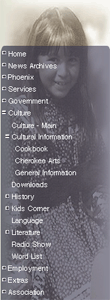
Fig. 1: Navigation column in English.
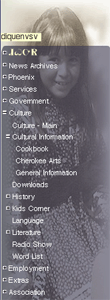
Fig. 2: Navigation column in Cherokee syllabary and phonetics upon rollover.
However, the navigation system is not the only dual language feature, as the Cherokee Nation site provides a lexicon and a Cherokee converter. The lexicon (see Fig. 3) provides users with a tool for looking up both English translations of Cherokee words and Cherokee translations of English words, and the language converter (Fig. 4) offers users the opportunity to convert Cherokee phonetics into Cherokee syllabary. Such dual language options offers users from a variety of literacy backgrounds to access the information they desire in the language they desire, which makes the system compatible with the real-life literacies of its users—not to mention that it provides those hoping to learn Cherokee language access to it.
![]()
Fig. 3: Lexicon translates English to Cherokee and Cherokee to English.
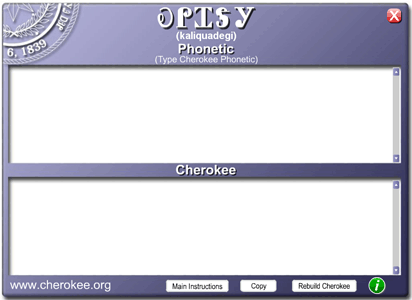
Fig. 4: Converter facilitates the translation of Cherokee phonetics into the syllabary.
Given the demand for learning Cherokee and the importance of preserving the language, the Cherokee Nation offers users online classes to learn Cherokee. Users sign up for a 2-day/week class schedule and meet with others eager to learn the language in on online forum (see Fig. 5).
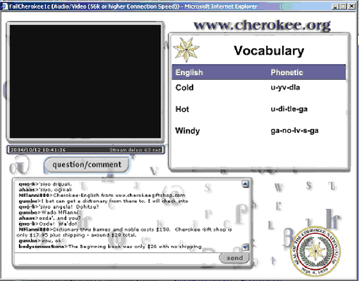
Fig. 5: The language class window. Registered students can see the instructor in the upper left hand corner and the lesson in the upper right hand window—and participate in a real-time, online chat with fellow students and the instructor in the lower left-hand corner.
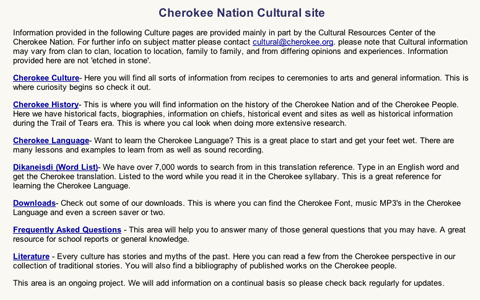
Fig. 5: Just one page of the cultural information provided on the site, as there are many other pages—some even tailored for the school aged children.
Such strategies are employed by the Cherokee Nation to deliver to online users digital cultural rhetorics from Cherokee people. The site acknowledges that "[c]ultural information may vary from clan to clan, location to location, family to family, and from differing opinions and experiences;" thus, the Cherokee Nation site takes advantage of the dynamic nature of digital storytelling, where (like oral storytelling) stories are always already dynamically constellated with a multitude of other related stories. Ultimately, although the Cherokee Nation site certainly adds to the limited online discourse, not to mention credible online discourse, regarding the Cherokee Nation and Cherokee people, culture, language, and history, it does not claim to present a exclusive narrative of "the Cherokee people." Perhaps by example, then, the Cherokee Nation site demonstrates that digital storytelling serves a natural progression for historically oral cultures, where it is accepted that stories thrive in media less rigid and static than print, as the Cherokee Nation site acknowledges and includes a variety of Cherokee cultural rhetorics, not one exclusive Cherokee cultural rhetoric. Consequently, the Cherokee Nation site illustrates that the the nature of the Web can be used for the survivance of the indigenous peoples, where users can triangulate stories with a few clicks of the mouse, taps on a mouse pad, or voice commands with speech-activated technologies.
Providing Accurate Representations of American Indians
Not only can the Internet be appropriated to help preserve and reclaim complex tribal languages and cultures, but it can also offer a venue for presenting tribal histories in new ways that complicate the single identity that many non-Natives attach to "nativeness." Whereas Vizenor (1998) posits that traditional American Indian oral stories have the power to make, re-make, and un-make the world, I suggest that online Native stories have this same power. For example, many unfamiliar with American Indian cultures may buy into the stereotypes historically (and currently) portrayed in media: Indian as alcoholic, poor, uneducated, unskilled, unmotivated, civically disengaged, and the list goes on. On the other hand, others "fetishize"1 what it means to be Native American. However, tribal sites can combat such stereotypes and fetishism through their content choices.
To illustrate, the Cherokee Nation promotes the Nation as one that is politically involved within both the Nation and the United States. Take for example the Nation’s response to Tom Coburn’s, U.S. Senator, concerning the Cherokees (see Fig. 6). The site includes responses from Chief Smith concerning Coburn’s comments that Cherokees “aren’t Indians” and that our treaties are "primitive agreements that should not stand in the way of Oklahoma’s future," and that he would stop tribal courts. Further, audio and video feeds offer users Coburn’ commentary in his own words. In 2004, the site also supplied overviews on the candidates running for state representative in Nov. 2004, including how each view the relationship between the U.S. and the Cherokee Nation’s tribal sovereignty so tribal members could know where each candidate stood on each issue pertinent to the Nation (see Fig. 7).
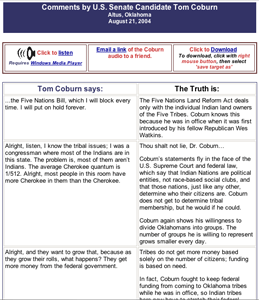
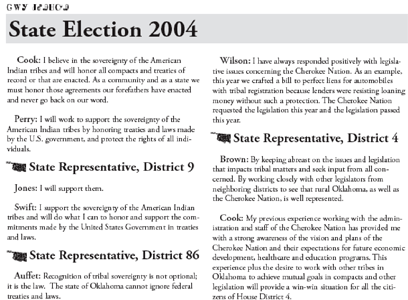
Fig. 6: The table at the top of the page allows
users to access audio files in a variety of ways,
while the lower table offers textual, excerpted
portions of his comments along with Chief Coburn's
responses.
The Nation further promotes itself as a politically engaged community via timely news releases on the home page. For example, the headlines on the home page from the week of December 5, 2004 alone shared several philanthropic and civic projects the Cherokees are sponsoring (see Fig. 8).
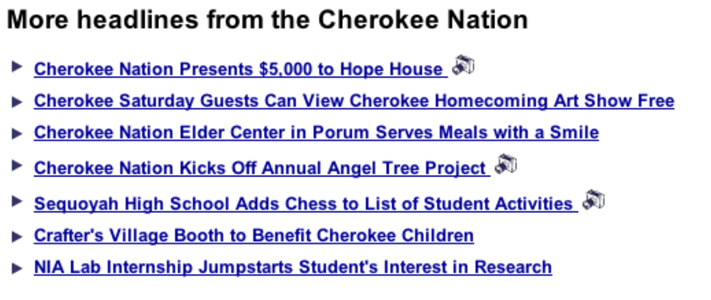
Fig. 8: The Cherokee Nation home page headlines for the week of 12/5/04.
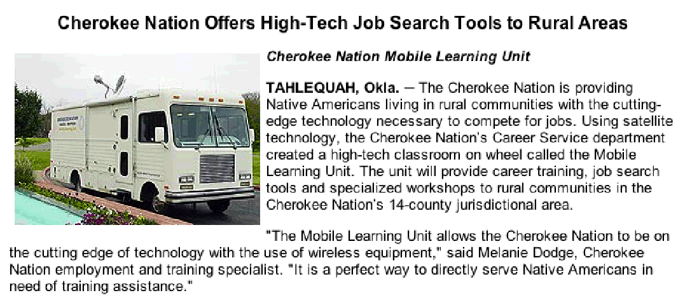
Fig. 9: The Cherokee Nation shares this press release on 12/3/04.
How else will non-natives find out about such political, civic, and philanthropic endeavors of the Cherokee Nation without the venue of the Cherokee Nation site? Since many other media venues do not privilege indigenous voices, it is up to American Indians to ensure that their voices are heard if they are interested in revising the mainstream perceptions of Native Americans. As Womack (1999) posits, “…Native perspectives have to do with allowing Indian people to speak for themselves, that is to say, with prioritizing Native voices” (p. 4). The Internet provides a forum, then, for American Indians to share their online voices, a bricolage of the multiple and varied stories of indigenous peoples. And the Net can facilitate both the oral and visual traditions of American Indian storytelling, as it allows users to experience several related stories in one journey on the Web and to complement the written accounts of oral stories with visual representations. Furthermore, not only are such methods of storytelling familiar to and trusted by Indian Nations, but such stories are also important to the studying of how certain groups and individuals put forward the representations and behaviors of the society in which they live. Such a study may move what non-natives may deem the single native experience or identity to a reimagined notion of Indian-ness, which complements Robert Warrior’s (1999) encouragement for us to “see the complexities of our various pasts and have an opportunity to learn how other people have confronted the same problems we face” (p. 123).
Providing Connections Among Indigenous Peoples
According to the Bureau of Indian Affairs, “Over half of the total U.S. Indian and Alaska Native population now lives away from reservations” (p. 4). Thus, online spaces can provide a forum for connecting indigenous peoples living in any location. This can only serve to further strengthen the tribal base, as all members can be kept abreast of daily tribal news, not just those who live near tribal council. Besides connecting natives from any geographic location—whether the reservation, or urban or rural settings—online indigenous spaces can provide a forum for connecting both enrolled and non-enrolled American Indians as well. Consequently, the promise that the Net affords Native Nation-building exists in no other form.
To explain, Resa Crane Bizzaro (2004) argues that “more indigenous nations must consider a place for unenrolled members for community renewal to take place” (p. 70). She continues, “If nations strengthen their voices by adding more members, it will become easier to change the stereotypes and misapprehensions held against Native Americans in this country, perhaps even affecting legislation” (p. 73). She suggests that such gestures will enable us to “develop and maintain our own rhetorical communities, especially if they exist outside the boundaries of the reservations” (p. 73).
This is what the Cherokee Nation does via providing information to those seeking Cherokee citizenship information, as well as offering the aforementioned language courses, which are often taken by mixed-bloods and unenrolled members. Although students must first register before joining the course, the course is free, and all affiliates, or even non-affiliates, of the Nation are welcome (see Fig. 10). Such online connections can encourage alliances, which Powell (2004) argues can help us to learn “to take hold of one another and emerge at the beginning of a new story about ourselves, not a ‘prime’ narrative held together by the sameness of our beliefs, but a gathering of narratives designed to help us adapt and change as is necessary for our survival” (p. 58).
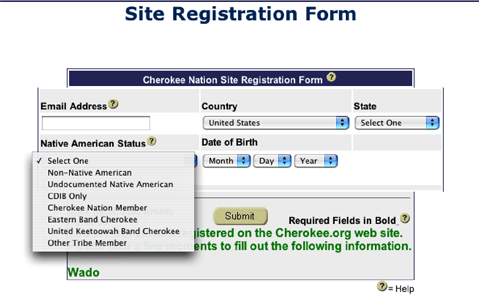
Fig. 10: As can be seen in the drop down registration window, any site user is welcome to join in the language acquisition community: non-natives, undocumented (or unenrolled) Indians, CDIB Indians (card carrying, or enrolled, Natives), Cherokee Nation members, Eastern Band members, United Keetoowah Band members, and other tribe members.
1 Lisa Aldred (2000) defines Native American fetishism: “I would characterize this phenomenon as follows. Real Native Americans are not a part of most Euro-Americans' lives. Yet non-Indians feel that their own lives are increasingly 'unreal' and 'inauthentic,' so they imagine a preindustrial, pre-European America where things were 'real' and 'authentic,' not representations but originals. Thus they simulate the original 'authentic Native American spirituality' and consume it. Meanwhile, their simulations allow them to ignore real indigenous peoples and the historical and socioeconomic relations that tie them together.”